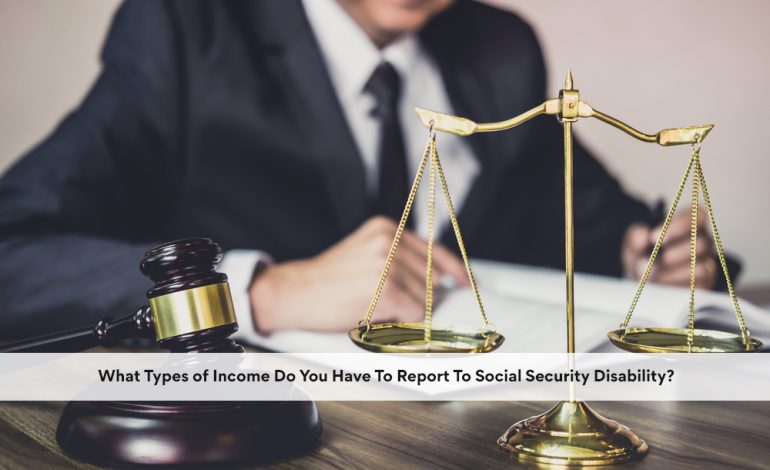What Are the Non-medical Requirements for Social Security Disability?
Social Security Disability Insurance (SSDI or SSD) benefits provide financial support to people who become disabled, either by illness or accident. But the government puts every SSD benefit applicant through a multi-stage assessment to determine if the claimant fits all the criteria the law requires.
This post explains what every SSDI claimant needs to prove to the Social Security Administration (SSA) before the government grants them monthly SSD benefit payments.
To learn more about how the SSD and SSI rules and regulations apply to your case, contact the disability lawyers who specialize in getting every client the highest level of SSD and SSI benefits available.
Applying for SSDI or SSI benefit payments can be a complicated and confusing process for someone with little or no experience. Expert SSD lawyers know how to read and apply all the regulations to achieve the best results for you and your family. The Clauson Law Firm is standing by to help you win all the SSD and SSI benefits you deserve.
Only FICA Taxpayers or Dependents Qualify for SSDI
The SSDI benefits are only available to people who paid into the Social Security system through payroll taxes or self-employment taxes.
You probably noticed every pay period that money was withheld from your check for FICA tax. That is the acronym for the Federal Insurance Contributions Act.
What Is Federal Insurance Contribution Act (FICA)?
In 1954, Congress enacted the FICA tax law to raise money to fund a program providing financial support to people who were elderly, suffering a disability, or surviving minor children of a deceased parent who was eligible for Social Security retirement or disability benefits.
The government charges 12.4% tax on your gross earnings each pay period for the Social Security program. Your employer pays half, 6.2%, and you pay the other 6.2%. A self-employed taxpayer pays the entire 12.4% themself. You and your employer both contribute another 1.45% each pay period for Medicare.
Your payroll contributions are partially used to pay current Social Security beneficiaries and the remainder is held in a Social Security Trust Fund[i] for future benefit recipients. Although the money is earmarked for these purposes, Congress has the power to redirect the money to other uses if it chooses. Since 1969, Congress has “redirected” more than $17.5 billion from the Social Security Trust Fund for other uses.
Work Credits Required to Qualify for SSDI Benefits (Work Duration Test)
Qualifying to receive SSD benefit payments requires not only that you pay FICA taxes, but that you pay a minimum amount over years of working. Eligibility for SSD benefits is determined by counting the number of “work credits” the claimant accumulated over their working life and in recent years.
Workers earn one work credit with each $1,470 in taxable earnings. No one can earn more than four (4) work credits per year, $5,880. If a worker earns $6,000 per year or $106,000 per year, they still only earn four work credits.
Sliding Scale Based on Age at Disability — The government established a sliding scale formula to require older workers with longer work histories to accumulate more work credits for SSDI eligibility than younger workers who become disabled at an earlier age. Since younger workers have less time to accumulate the full 40 work credits required of a 62-year-old, it’s reasonable to require fewer credits for fewer years worked.
For SSDI claimants between the ages of 18 and 24, SSDI eligibility requires they earn 6 work credits over a period of 1.5 years. SSDI applicants who become disabled between the ages of 24 and 30 need 18 work credits.
If you are under 24, you will need to have worked at least 1.5 years and earned at least 6 work credits. Those 24–30 will need to have worked between 2–4.5 years, earning 8–18 work credits. If you are between 31–42, then 5 years of work and 20 work credits are required to qualify for SSDI. After 42, the number of work credits needed increases by 2 every two years. For example, if you are 44, you need 22 work credits, if you are 46, you need 24 work credits, and so on. The chart shown here lays out the work credit scale for those who became disabled at different stages in their working career.
| Age Disabled | Work Credits Needed | Years of Work |
| Under 24 | 6 | 1.5 |
| 24 – 30 | 18 | 2 – 2.5 |
| 31 – 42 | 20 | 5 |
| 44 | 22 | 5.5 |
| 46 | 24 | 6 |
| 48 | 26 | 6.5 |
| 50 | 28 | 7 |
| 52 | 30 | 7.5 |
| 54 | 32 | 8 |
| 56 | 34 | 8.5 |
| 58 | 36 | 9 |
| 60 | 38 | 9.5 |
| 62+ | 40 | 10 |
Work Credits Are the Threshold for SSD Insurance Coverage
The Social Security Administration strictly observes the work credit system to differentiate who is and who is not eligible to receive SSDI benefit payments. For SSD claimants who worked only intermittently over the years, or who come close but still fail to accumulate the minimum number of work credits, the news that they don’t qualify for disability payments from Social Security can come as a shock. In the next section, we’ll cover the added requirement that the work credits be earned in recent years.
The Recent Work Test
Whether a claimant is covered by Social Security Disability Insurance depends not only on how long they worked and paid FICA taxes, but how recently the work was performed. Some people like to use the analogy that paying FICA taxes for Social Security Disability Insurance is like paying any insurance premium to get coverage. If you haven’t paid your premium recently, then your coverage probably lapsed.
SSDI works much the same way. To be covered and meet the non-medical SSDI eligibility work credit threshold, you need to have worked in the years of years immediately before the date you became disabled. If you became disabled between ages 24 and 31, you need to have for half the number of years since your 21st birthday. For example, if you became disabled at age 29, you would need to have worked four of the eight years since you turned 21.
If your disability occurred when you were 31 or older, then you must have worked 5 of the last 10 years immediately preceding the date you became disabled.
Who Keeps Track of Work Credits?
The Social Security Administration uses the government database tracking your employment, your earned income, and the FICA taxes you paid to determine your work credits However, if there is an error in the government’s records and that error leads to your denial of coverage, you will want to correct the records with evidence of your own.
Date Last Insured & Alleged Onset Date — If you have not worked recently enough to continue to have coverage under SSDI, you may still be able to qualify if the onset of your disability predated the lapse in your coverage. Experienced SSDI lawyers can review your work and medical history for evidence to persuade the SSA that your disability began during your SSDI coverage.
Income Limits and “Substantial Gainful Activities” (SGA)
Under SSD rules, you qualify for SSDI benefits if you are determined to have a physical or mental impairment that prevents you from performing “substantial gainful activities” (SGA). A substantial gainful activity is defined in 2021 as one in which you can earn $2,190 per month. (The SGA will be raised to $2,260 in 2022.)
That means even if you still suffer from the qualifying physical or mental impairment, earning income higher than the SGA is evidence leading the SSA to consider you ‘not disabled.”
Some income is excluded from being counted as earnings that would put you over the monthly income limit. For example, personal or employer-provided disability insurance payments do not count as income when assessing whether you exceeded the income limit. Neither would be receiving other needs-based government benefits like rental assistance, heating assistance, or transportation or educational subsidies. You need to talk with a professional SSD lawyer who knows all the rules.
Consult with an SSDI and SSI Specialist Lawyer for Expert Help
Hundreds of rules and regulations govern Social Security Disability Insurance benefits and Supplemental Security Income benefits. “Who qualifies and under what circumstances?” is not a question that can be answered until all your individual life circumstances are analyzed by an experienced SSDI lawyer who specializes in helping disabled people receive all the disability benefits they deserve. The Clauson Law Firm has represented thousands of clients whose SSD and SSI claims were unique, each of whom needed the full attention and legal skill Clauson Law provides. Our entire team of lawyers, SSD and SSI advocates, paralegals, investigators, and administrators is totally committed to getting you and your family the maximum SSD and SSI benefits possible.



1 Comment
If you work part time while on SSDI do you aquire more work credits and will your SSDI monthly benefits get raised if so?